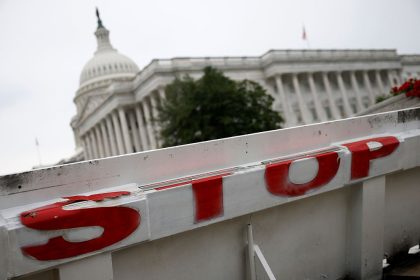ImagePixel/Getty Images; Illustration by Issiah Davis/Bankrate
- A cashier’s check is a secure form of payment since it’s paid for upfront and an authentic official bank check can’t bounce like a personal check.
- The bank may require you to wait up to 90 days before reissuing the check to allow time for the lost check to be found.
Cashier’s checks are a reliable form of payment, since they’re paid for upfront and won’t bounce. However, that can make it more complicated if you lose one of these checks. Since it was already paid, the bank can’t simply cancel a cashier’s check. You’ll likely need to file a claim with the issuing bank to get the check reissued, and there may be a waiting period.
What is a cashier’s check?
A cashier’s check is a form of payment issued by a bank or credit union on behalf of a customer. Unlike a standard check, the value of a cashier’s check is paid upfront. That means the check won’t bounce, since it has already been paid for when it’s deposited and is backed by the bank’s funds.
Some merchants or vendors may not accept personal checks but will accept cashier’s checks since there’s less risk of the check being counterfeit or bouncing.
A cashier’s check is generally used for making large purchases – in cases where you wouldn’t want to carry around this amount in cash – or for transactions to protect the seller, so the seller knows if the check is authentic it will clear. A cashier’s check might be used when purchasing a home, when providing a security deposit before renting an apartment, to buy a car or for other purchases.
Scott Birrenkott, director of legal at the Wisconsin Bankers Association, says banks are obligated by law to pay cashier’s checks.
“So when a cashier’s check gets lost, the bank can put a stop payment on it but might still be legally obligated to pay it if it eventually turns up,” Birrenkott says. Once a stop payment is placed upon the cashier’s check, after the prescribed time period has lapsed then the bank will not pay the item, Birrenkott says.
The time period may vary by state but is typically 90 days. It’s possible that your bank could ask you to get an indemnity bond for the amount of the lost cashier’s check before it issues you a new one, according to the Office of the Comptroller of the Currency (OCC). The OCC defines an indemnity bond as a type of insurance policy that ensures that you will be liable (instead of the bank) for any losses if the lost check ends up being found and presented for payment.
Wells Fargo, for instance, requires an indemnity agreement as a condition of stop payment and reissuance, according to Wells Fargo’s website.
Chris Powell, head of deposits and customer engagement at Citizens Bank says at Citizens, a waiting period is imposed when a customer notifies its branches of a lost or missing check.
After that waiting period ends, the customer can visit a branch in person to replace the item, Powell says. Prior to replacing, the branch must confirm that the check did not ‘pay.’
What to do if you lose a cashier’s check
Losing a cashier’s check is much different than losing a personal check since an official bank check generally can’t be stopped instantly. On the other hand, you might be able to put a stop payment on a personal check instantly depending on your bank’s policies.
Since cashier’s checks are paid for upfront, the issuing bank usually can’t put a “stop payment” on the check until up to 90 days after the check is reported lost or stolen.
“A lost cashier’s check isn’t the end of the world, but it does, by law, require a series of steps to replace it,” Powell says. “Immediately contact the bank if a cashier’s check is lost, stolen, destroyed or suspected of fraud.”
- Contact your bank: The first step is to contact the bank that issued the lost check. If you’re the recipient of the check and don’t know which bank issued it, you may need to get in touch with the payer to find out which bank they bought it from.
- File a claim. The bank will ask you to fill out a “declaration of loss” statement. This statement is a legal claim, declaring that you lost a check. However, the declaration of loss is not enforceable until 90 days after the check was issued. That 90-day window exists to give some time for the check to be found.
- Wait 90 days. You’ll generally have to wait up to 90 days for a new cashier’s check to be issued. Though in a state like Wisconsin, for instance, the wait might only be 30 days due to the state’s law, Birrenkott says.
If the check is still lost after 90 days, the original check with a stop payment on it is essentially voided and the bank will reissue the cashier’s check.
Bottom Line
An authentic cashier’s check is a guaranteed form of payment, but losing one can be a complicated process. It’s important to immediately contact the bank and fill out the bank’s relevant form.
It’s important to treat a cashier’s check like you’d treat actual cash and take the necessary steps to protect yourself and your finances when dealing with a lost cashier’s check.
Read the full article here
















